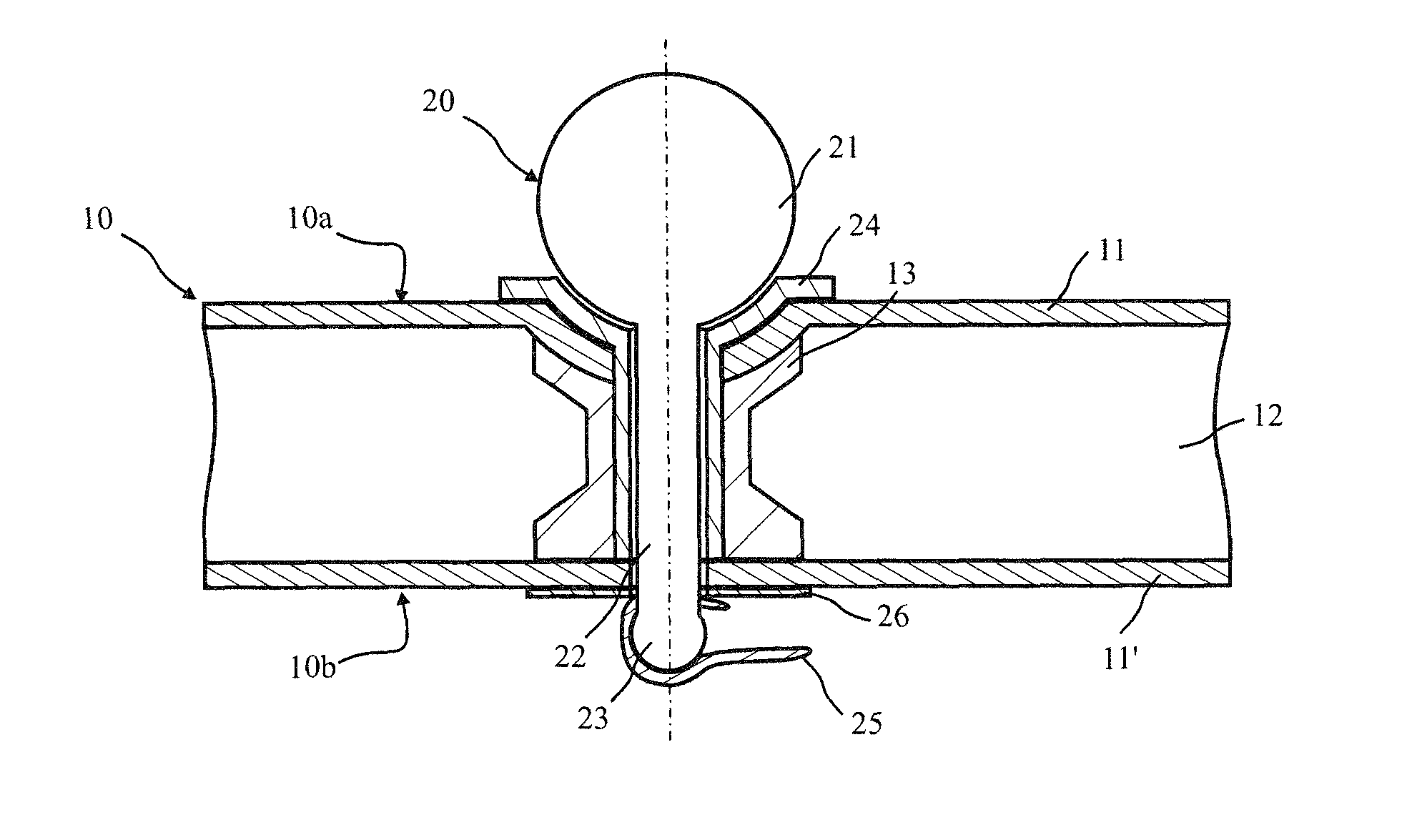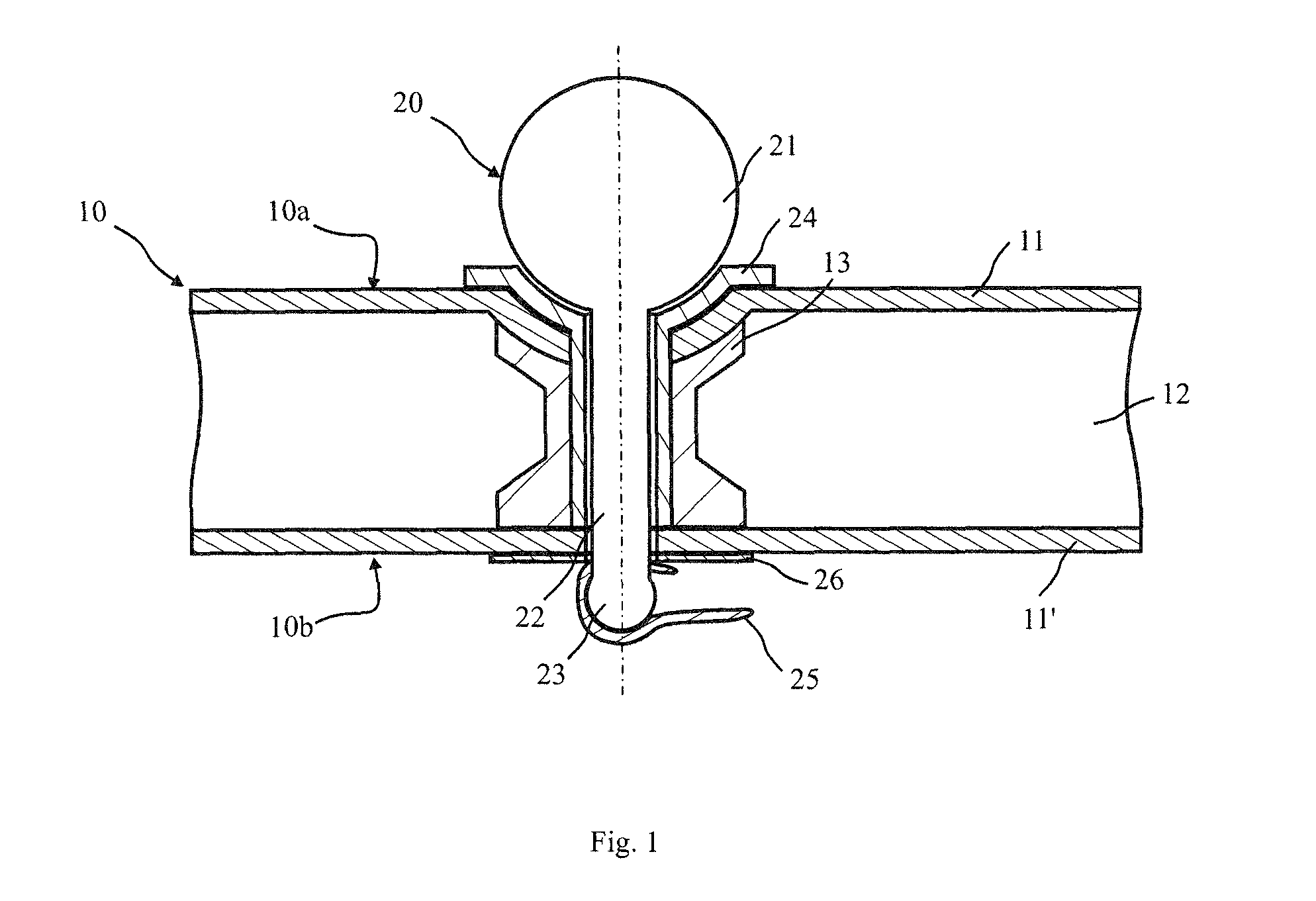Plastic Component Comprising a Connecting Element
- Summary
- Abstract
- Description
- Claims
- Application Information
AI Technical Summary
Benefits of technology
Problems solved by technology
Method used
Image
Examples
Example
DETAILED DESCRIPTION OF THE DRAWINGS
[0022]FIG. 1 shows a sectional view through a plastic component 10 with a connecting element 20 arranged on it. The plastic component 10 is fashioned as a sandwich component with a first reinforcement layer 11, which is shown in FIG. 1 as the top reinforcement layer 11, and a second reinforcement layer 11′, which is shown in FIG. 1 as the bottom reinforcement layer. The reinforcement layers 11, 11′ are formed from a fiber-reinforced plastic, in which reinforcement fibers are incorporated in a matrix material, for example an epoxy resin, of a thermoplastic or duroplastic matrix. The top reinforcement layer 11 forms a first side 10a of the composite component. The bottom reinforcement layer 11′ forms a second side 10b of the composite component 10. Between the reinforcement layers 11, 11′ there is placed a core 12. The core 12 surrounds an insert 13, having an inner borehole or an opening through which at least the connecting element 20 can extend. ...
PUM
 Login to view more
Login to view more Abstract
Description
Claims
Application Information
 Login to view more
Login to view more - R&D Engineer
- R&D Manager
- IP Professional
- Industry Leading Data Capabilities
- Powerful AI technology
- Patent DNA Extraction
Browse by: Latest US Patents, China's latest patents, Technical Efficacy Thesaurus, Application Domain, Technology Topic.
© 2024 PatSnap. All rights reserved.Legal|Privacy policy|Modern Slavery Act Transparency Statement|Sitemap


